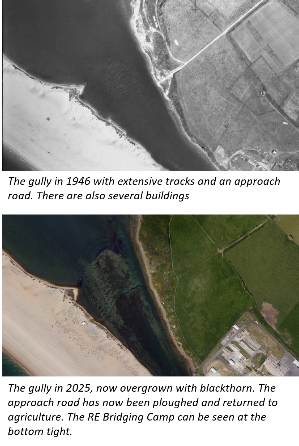Chesil Beach and the Fleet Lagoon
18 miles and 180 billion pebbles
Ferrybridge - D-Day preparations

Portland naval base and Weymouth were the main embarkation ports for the 1st US Infantry Division heading to Omaha beach on D-Day. In preparation for this, areas of land were set aside to store their vehicles and other paraphernalia of war. This included the Ferrybridge area and other areas along the shore of the Fleet.
The main storage area for vehicles was on the area of Chesil Beach which is now the big car park by the Visitors Centre. An are roughly twice the size of the current car park was flattened and consolidated to allow large military vehicles to be stored. The area was accessed by two entrances, one near the existing car park entrance, the other on the south side leading towards Portland. Vehicles were packed in very densely and having the second entrance simplified moving the vehicles out on the days before D-Day.
In addition to the parking, a number of buildings were erected alongside the car park and across the main road by the railway line. In this and other areas there was a large number of support buildings and concrete bases built and to aid this pebbles were extracted from the area between the car park and Chesil Beach resulting in the lagoon that forms at high spring tides today.
As well as the car park area a large number of vehicles were stored in the fields around the Bridging Camp at The Narrows. A gully was dug out of the shoreline bank so that amphibious vehicles could practice entering and exiting the water of the Fleet. Although overgrown, this gully is still visible today.
The aerial picture below and its overlay show the location of the work for D-Day.
Images courtesy of the National Network of Regional Coastal Monitoring Programmes.

For more information on Portland’s involvement with D-Day visit the Castletown D-Day Centre website here or visit in person to their museum on the road to Portland Port.


